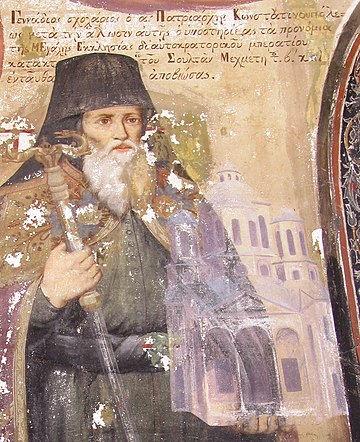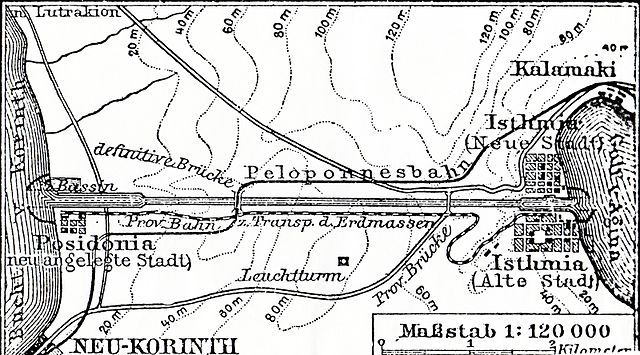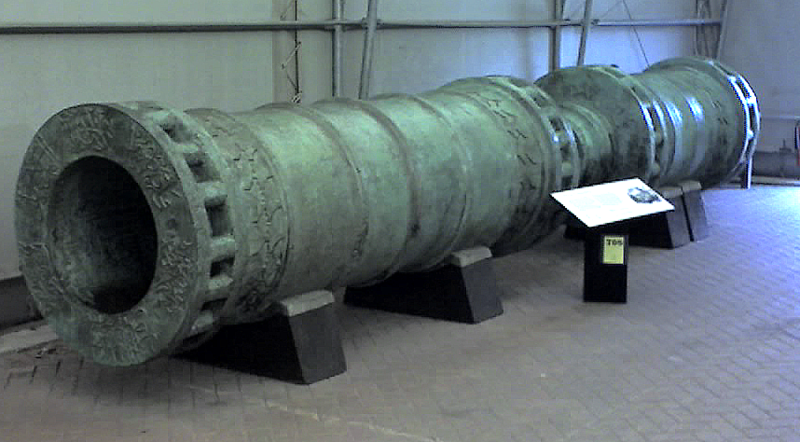 |
| Durad Branković |
Upon receiving
the news of Murad’s death it occurred to the Byzantine Emperor Constantine and
his advisers that it would be helpful if Constantine married Murad’s widow Mara.
This might give the Byzantine Empire some degree of protection as they believed
that Mara would have some influence over the nineteen year old Sultan.
Mara was a
distant relative of Constantine’s; his niece had married Mara’s brother Lazar[i]. Durad Branković and his wife Irene were agreeable to the suggestion, but opposition came from
an unexpected quarter. Mara was adamant that she was going to devote her widowhood
to celibacy, chastity and charitable works[ii].
The west
viewed Mehmet as too young and immature to be the serious threat to Christian
Europe that his father had been. The Byzantines in particular were aware that
Mehmet was despised by his troops for his licentious lifestyle. This
unrealistic view was fostered by Mehmet who, within months of his accession,
concluded treaties with Hunyadi, Francesco Foscari the Doge of Venice
and Durad Branković.
 |
| Francesco Foscari |
Mehmet sent
messages of goodwill to Vladislav II the Prince of Wallachia, the Knights of St John in Rhodes[iii], and the Genoese lords of Lesbos and Chios. Constantine sent ambassadors to the
new Sultan to congratulate him on his accession. Mehmet swore by Allah and the
Prophet to live at peace with the Byzantines. Ambassadors were exchanged with
the ruler of Trebizond, John IV Comnenus. The Greek chronicler George Sphrantzes[iv] warned John IV that
‘This man, who just became
sultan, is young and an enemy of Christians since childhood…..if God should
grant that the young sultan be overcome by his youth and evil nature and march
against our City, I know not what will happen.’[v]
In the spring
of 1451 the Karamanids sought to take advantage of Mehmet’s inexperience and
revolted against Ottoman rule, seizing three Ottoman fortresses. Mehmet led an
expedition against the Karamanid emir Ibrahim, who fled when the army reached
central Anatolia. Along with returned the captured fortresses, Ibrahim;
‘Agreed to send every year a
certain number of soldiers to serve in the Ottoman army.’[vi]
 |
| Byzantine Anatolia |
During his return
from this campaign Mehmet was faced by another insurrection by the Janissaries,
demanding more pay. He was forced to accede to their demands, but had their
commander Kazanci Doğan whipped and dismissed from his post. He then
reorganised the Janissaries giving himself greater control over them.
Portents of Doom
Returning
from Anatolia, Mehmet found Constantine had sent envoys to renegotiate a treaty
relating to the upkeep of the Turkish pretender Orhan[vii]. The envoys demanded an
increased subsidy for Orhan or he would be released to contest the Ottoman
throne. Mehmet delegated Halil to deal with the Byzantines and Halil warned
them that playing with Mehmet was playing with fire. And indeed it was; Mehmet
immediately started working on plans to attack Constantinople; there was no-one
now in a position to stop him.
 |
| Rumeli Hisari |
Mehmet commenced
by building a fortress on the European side of the Bosphorus, a counterpart to the one on the Asiatic side[viii]. Construction of the
fortress, which became known as Rumeli Hisari[ix], began in April 1452. It was built
just eight miles north of Constantinople; the Byzantines were powerless to
prevent the fortress sited so close to their city[x]. When Constantine
complained that the fortress violated their treaty Mehmet replied;
‘I take nothing from the
City. Beyond the fosse she owns nothing. I desire to build a fortress ….the
emperor has no right to stop me.’[xi]
When the
Rumeli Hisari was completed Mehmet marched his troops to Constantinople and he
spent three days in August reconnoitring. Then, having garrisoned the fort with
a force of 500 men, Mehmet returned to Adrianople.
Technical Expertise
Mehmet was
approached by the Hungarian engineer Orban who offered to build cannon that would destroy city walls[xii]. Mehmet was interested
in the science of war; studying technical manuals on the construction of
fortresses and siege machines and he consulted foreign experts, specialising in
armaments. He engaged Orban to make cannon for the Rumeli Hisari that would be
able to fire across the Bosphorus[xiii].
When
finished, Orban’s cannon were placed on the ramparts of the fortress. Mehmet
then proclaimed that all ships passing through the Bosphorus must stop for
inspection by the commander of the Rumeli Hisari. In early November two
Venetian ships managed to slip through but two weeks later another Venetian
ship was not so lucky. It was sunk and the crew beheaded and left by the
roadside.
 |
| Bosphorus |
Once Orban
had proved the effectiveness of his cannon Mehmet ordered the production of one
twice as large. When the cannon was ready to be tested 700 men were appointed to service and
transport it. Fifteen yoked pairs of oxen were needed to move the monster,
albeit with great difficulty. The test firing in January 1453 took place near the
Sultan’s palace; the 1,200lb stone[xiv] cannonball flew one mile
and the noise of the explosion was heard for ten miles around.
Mehmet
ordered that the road to Constantinople be levelled and that all the bridges
were to be strengthened to allow the cannon to be transported to the Byzantine
capital. Armourers and engineers worked throughout the winter making weapons,
siege machines, armour and artillery. By March 1453 Orban and his engineers had
reached within five miles of Constantinople, described by a monk, George Scholarius[xv] as
‘A city of ruins, poor and
largely uninhabited.’[xvi]
Cries for Help
 |
| Scholarius |
Constantine
appealed to Pope Nicholas for help; he received a cardinal, an archbishop and
200 Neapolitan archers in return. In desperation Constantine agreed a union
between the Catholic and Orthodox churches. The union was rejected by the majority of
Constantine’s subjects. The opposition was led by Scholarius who pinned a
manifesto condemning the union to his cell door.
‘Wretched Romans, how you
have been deceived! Trusting in the might of the Franks you have removed
yourselves from the hope of God. Together with the City which will soon be
destroyed, you have lost your piety.’[xvii]
The
Byzantine citizens mourned;
‘This is the end of our
city, the end of our race. These are the days of the Anti-Christ.’[xviii]
Final Preparations
Halil,
always a proponent of peace, had been bribed by the Byzantines, but he was
frightened by Mehmet into agreeing with his plans that the Sultan now worked on
almost without cessation. In any event Mehmet intended to rid himself of Halil
once Constantinople had been captured.
 |
| Isthmus of Corinth |
In late
January 1453 Mehmet’s advisers sanctioned the attack on the remnants of the
Byzantine Empire. Mehmet ordered the Beylerbey of Rumelia Karaca Pasha to muster an army and attack Thrace. He also
ordered that a fleet assemble at Gallipoli; Kritoboulos of Imbros[xix] records that;
‘He [Mehmet] chose crews
from all his coast towns….for he attached greater importance....to the fleet
than to the army. The total number of ships was said to be three hundred and
fifty[xx]
without counting the transports.’[xxi]
Mehmet was
very much aware that previous sieges of the city had failed as they had
invested Constantinople only from the land. Mehmet fully intended to make much
use of his navy in the upcoming siege.
Constantine’s
brothers were kept in check by Omer Pasha, whose army stationed on the Isthmus of Corinth, blocked access from the Morea. The Ottoman army,
numbered at about 80,000 men[xxii], marched on the last
outpost of the Byzantine Empire.
Bibliography
The Grand
Turk – John Freely, I.B. Tauris and Co Ltd, 2009
The
Janissaries – Godfrey Goodwin, Saqi Books 1994
Lords of the
Horizons – Jason Goodwin, Henry Holt & Co 1998
The Ottoman
Empire – Halil Inalcik, Phoenix 1994
The Ottoman
Empire – Lord Kinross, Folio Society 2003
Byzantium,
The Decline and Fall – John Julius Norwich, Folio Society 1995
The Ottoman
Empire – Andrina Stiles, Hodder & Stoughton 1989
www.wikipedia.en
[i]
Who was to be Durad’s successor
[ii] Mara returned back to
live with her father and stepmother after Murad’s death. She rejoined Mehmet’s
court after the death of her father
[iii]
The order was sovereign ruler of the island
[iv]
Enslaved by the Ottomans after the fall of Constantinople
[v]
The Grand Turk - Freely
[vi]
Ibid
[viii]
Built in 1394 by Beyazit I
[ix]
The Castle of Europe; Mehmet’s three viziers built a tower each; the Turks
called it Boghaz Kesen – the cutter of the strait/throat
[x]
By now the empire was reduced to Constantinople and its immediate environs
[xi]
The Grand Turk - Freely
[xii]
Orban had already proffered his invention to Constantine who was unable to
afford Orban’s salary and had could not get the materials to build the ‘super’
cannon
[xiii]
Mehmet ensured that Orban had everything he needed and paid him four times the
requested salary
[xiv]
More than two feet in diameter
[xv]
Scholarius had originally accepted the union but then had after thoughts. He
was later Ecumenical Patriarch of
Constantinople
[xvi]
The Grand Turk - Freely
[xvii]
The Grand Turk - Freely
[xviii]
The Ottoman Empire - Kinross
[xix]
Mehmet’s biographer
[xx]
Modern estimates make the total about ⅓ to ½ this number
[xxi]
The Grand Turk - Freely
[xxii]
With a hard core of about 20,000 Janissaries

No comments:
Post a Comment
Note: only a member of this blog may post a comment.